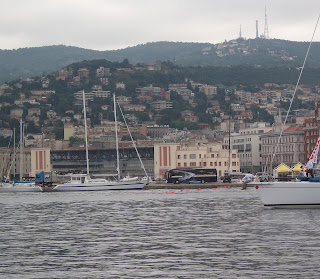Innovative painter had brief but brilliant career
 |
| Masaccio's painting The Trinity |
He is now judged to have been the first truly great painter of the early Renaissance in Italy because of his skill at painting lifelike figures and his use of perspective.
Christened Tommaso di Ser Giovanni di Simone, the artist came into the world in a small town near Arezzo, which is now known as San Giovanni Valdarno.
Little is known about his early life but it is likely he would have moved to Florence to be apprenticed to an established artist while still young.
The first evidence of him definitely being in the city was when he joined the painters’ guild in Florence in 1422.
The name Masaccio derives from Maso, a shortened form of his first name, Tommaso. Maso has become Masaccio, meaning ‘clumsy or messy Maso’. But it may just have been given to him to distinguish him from his contemporary, Masolino Da Panicale.
Massaccio’s earliest known work is the San Giovenale Triptych painted in 1422, which is now in a museum near Florence . He went on to produce a wealth of wonderful paintings over the next six years.
While in Florence, Masaccio studied the works of Giotto and became friends with Brunelleschi and Donatello. He also travelled to Rome with Masolino, where he became influenced by ancient Roman and Greek art.
One of his major works is The Trinity, a fresco produced for the Church of Santa Maria Novella in Florence in 1427 in which he conveys a depth of space, with the interior of a chapel cleverly painted behind the figure of Christ on the Cross.
Masaccio died in Rome in 1428 in mysterious circumstances. He was just 26 years of age. There was a story that he had been poisoned by a jealous artist but nothing certain is known about the cause of his death.
His fellow artists regarded it as a great loss because Masaccio had been the first to use techniques to translate into painting a sense of the three dimensions. He was to have a profound influence on other artists who came after him.
Travel tip:
Arezzo, near where Masaccio was born, is an interesting town in eastern Tuscany that has become famous because of another artist, Piero della Francesco. The 13th century church of San Francesco contains Piero della Francesco’s frescoes, The Legend of the True Cross, painted between 1452 and 1466 and now considered to be one of Italy’s greatest fresco cycles.
 |
| The Basilica of Santa Maria Novella |
Travel tip:
The gothic Basilica of Santa Maria Novella in Piazza di Santa Maria Novella in the western part of Florence contains some of the most important works of art in the city. A highlight is Masaccio’s pioneering work, The Trinity, which is a masterpiece of perspective and portraiture.
Home





